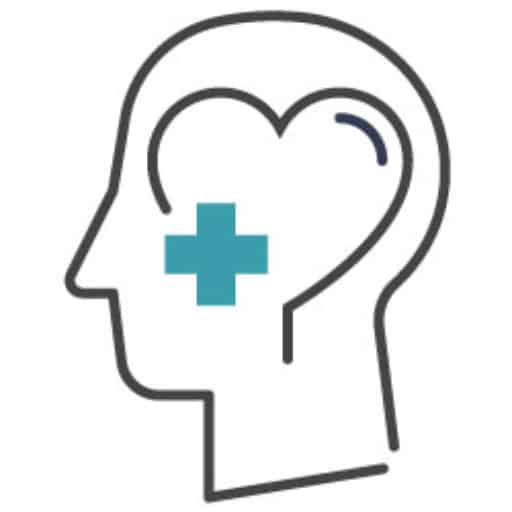Do you think the sky is falling when you know it is not? Is your natural tendency to believe the most straightforward problems are catastrophes? You might be prone to catastrophizing. But what does catastrophizing mean, and is it a sign of mental illness?
Defining Catastrophizing and Its Psychological Impact
Catastrophizing in psychology refers to cognitive distortions that compel individuals to leap to the most dire conclusions. This occurs instantaneously and often without any justifiable reason for the panicky thoughts. Generally, the person lacks sufficient information to come to the worst conclusions but proceeds to think that way regardless.
Yet, engaging in occasional catastrophic thinking doesn’t mean that you are showing one of the signs of mental illness. Understanding catastrophizing allows you to differentiate between everyday worries and exaggerated fears that spiral out of control. When someone catastrophizes, they’re in a perpetually anxious state. They’re unable to recognize their catastrophic thoughts for what they are and have extreme difficulty reality-testing appropriate and possible solutions to problems.
Common Characteristics of Catastrophic Thinking
What are the signs of catastrophic thinking to be aware of and potentially cope with? Although the following list is not all-inclusive, those who engage in catastrophizing tend to:
- Constantly experience negative self-talk. This is the opposite of a pep talk. Negative self-talk is self-shaming, points out the futility of pursuing action, reprimands and reminds of past mistakes, and paints a bleak picture of outcomes.
- Be forced to contend with racing thoughts that do not end. There is no turning off the thoughts, no way of stopping the constant flow of negativity, the stream of cascading catastrophes that await.
- Feel depressed, anxious, worried, and pessimistic. In understanding catastrophizing, psychologists note that someone who catastrophizes typically also experiences significant feelings of pessimism, anxiety, worry, and depression.
- Magnify minor problems and imagine the worst. It isn’t a relatively insignificant error in the checking account but an indication that you’re irresponsible with money. That’s how catastrophizing looks. It’s also more than exaggerating. Instead, it is unintentional and uncontrollable.
- Feel helplessness and despair over situations and decision-making. There’s no way to see anything positive from the current situation. Making decisions is a disaster in the process since every option seems hopeless.
- Be overwhelmed by anger and fear. The emotions are powerful and flood the consciousness to the point that the individual gives up, convinced the worst is happening.
- Overthink past events and current everyday situations. What’s done is never past when someone catastrophizes. What could they do better? Doesn’t this reinforce how worthless they are? As for today’s situation, keep running it through your head — but the answers won’t come.
Exploring the Link Between Catastrophizing and Mental Health
By better understanding catastrophizing, it should be possible to look at the link between mental health and catastrophizing — without engaging in catastrophic thinking. Medical researchers looking at catastrophizing in psychology have found links with many behaviors and experiences that may have risks of significant negative consequences.
For example, catastrophizing may be linked with the following diagnosed conditions:
- Anxiety and various anxiety disorders (including generalized anxiety disorder and social anxiety disorder)
- Agoraphobia
- Depression
- Panic disorder
- Problems with anger
- Post-traumatic stress disorder (PTSD)
Yet, someone can have problems with mental health and catastrophizing without having any diagnosed disorder. For example, in those with recurrent insomnia, their thoughts tend to focus on never being able to sleep through the night. People experiencing chronic pain may catastrophize about having an incurable disease or that the pain will worsen.
Recognizing When Catastrophizing Becomes a Concern
There are times when serious problems must be addressed. That doesn’t mean automatically jumping to catastrophizing, but it does warrant concern if cognitive distortions mount with associated consequences. However, when this constant negative thinking becomes a persistent reality and interferes with daily living, catastrophizing may be one of the signs of mental illness.
Coping Strategies and Seeking Professional Guidance
Everyone experiences moments of panic and fears the worst. It is human nature to look at problems and foresee potential adverse outcomes. That doesn’t mean they’re engaging in catastrophic thinking. It’s more about analyzing situations and issues and attempting to make sense of them. Making informed choices requires careful examination of all aspects, good and bad.
Coping With Catastrophizing
If you’re trying to manage a tendency to see everything as a catastrophe, finding effective ways of coping with catastrophizing may help. Remember that not every situation spells doom and gloom. There are workable ways to solve problems, including coping strategies that work to help lift mental well-being.
- Challenge what you think. Challenging self-talk can help you surmount the hurdle of always reverting to the worst that could happen. Psychologists use this technique to help those with anxiety and other mental health disorders. It includes using “what-if” scenarios to challenge everyday worries and fears that could get out of hand.
- Keep a journal. It may be helpful to write down negative thought patterns that you notice. The idea is to review them later when you’re not so emotionally involved. By journaling, you can help you become better at addressing catastrophic thoughts.
- Learn to accept uncertainty in life. Nothing is certain in life. When you accept life’s uncertainty, it can allow you to recognize you have choices. Instead of immediately reacting, sit with the feelings of uncertainty. This can help defuse the trigger and prevent decisions based solely on fear and negative emotions.
- Maintain social support. When your mental well-being awareness is at its low, and you need support for coping with catastrophizing, talk with family or trusted friends.
- Engage in good self-care. If you’re not eating nourishing meals, avoiding exercising, getting insufficient sleep, drinking too much, or engaging in other activities detrimental to your health, your tendency to catastrophize will continue to worsen. Help restore balance by eating right, exercising regularly, and participating in activities that make you feel good and are good for your physical and mental health. These helpful self-care habits are sound coping measures you can use daily.
Treatment for Catastrophizing
While catastrophizing may be a symptom of diagnosable anxiety, chronic pain, insomnia, depression, PTSD, or other medical or mental health conditions, it is treatable. Your mental health professional can help design an appropriate treatment program. This will cover understanding catastrophizing and addressing any signs of mental illness.
Treatment for catastrophizing in psychology may include several types of talk therapies, medications designed to alleviate symptoms, and adjunct therapies to facilitate coping with catastrophizing. The first step is helping the individual identify that they are engaging in this negative behavior that can harm their lives. Mental health and catastrophizing may require professional help to ensure favorable outcomes.
Psychological Counseling Approaches
Among the talk therapies that are commonly used to address mental health and catastrophizing are cognitive-behavioral therapy (CBT), dialectical behavioral therapy (DBT), and acceptance and commitment therapy (ACT).
- Cognitive-Behavioral Therapy — Mental health professionals employ CBT to help individuals having trouble understanding catastrophizing to reframe their negative thoughts and behaviors. Over time, this may lead to some improvement in the tendency to catastrophize.
- Dialectical-Behavioral Therapy — Catastrophizing in psychology may be treated using DBT, a derivative of CBT. Whereas CBT focuses on reframing negative thinking, DBT emphasizes self-acceptance and a commitment to learning how to regulate toxic emotions like catastrophizing.
- Acceptance and Commitment Therapy — Experts in mental health and catastrophizing believe that ACT, which helps someone adjust to feeling some anxiety and discomfort, may help break the intrusive thought pattern.
Anti-Anxiety Medications
Talk therapy alone may be insufficient to eradicate catastrophic thought patterns. In conjunction with counseling, the treating psychiatrist may prescribe certain classes of anti-anxiety medications, such as selective serotonin reuptake inhibitors (SSRIs). What these drugs do is work on the brain’s chemical signaling to help address underlying mental health disorders such as depression or anxiety.
Adjunct Therapies
Alternative approaches to treat catastrophizing along with psychotherapy may include various forms of relaxation therapy, including meditation, mindfulness, yoga, progressive muscle relaxation, and deep breathing.
If you or a loved one struggle with catastrophic thinking, anxiety, depression, or other mental health disorders, our mental health experts at Restore-Mental Health can help. Mental health and catastrophizing are treatable, and we are always available to discuss how our programs may address your concerns. Contact us anytime for a confidential discussion. Learn how to overcome fearing the worst and believing nothing can be done about it. We can help you get better. The call is free, yet our help can transform your life.



